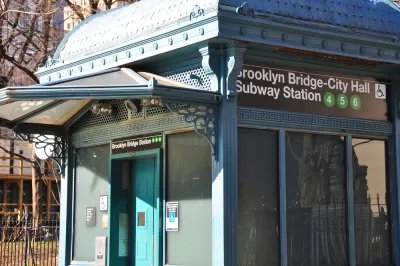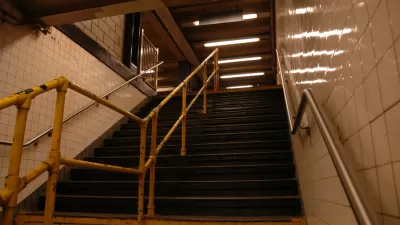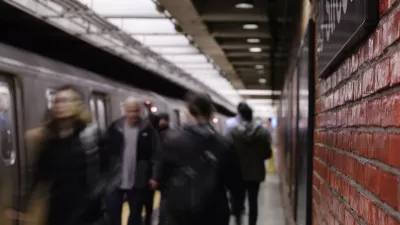After two lawsuits, the New York subway system has announced a 33-year timeline for making 95 percent of its stations fully accessible.

New York City’s subway system will finally become more accessible to people with disabilities or mobility challenges—in 33 years. As Michael Gold reports in The New York Times, “New York has lagged for years behind other major American cities in making its subway system accessible to people with disabilities: Just 126 of its 472 stations, or 27 percent, have elevators or ramps that make them fully accessible.”
As part of a settlement of two lawsuits, the Metropolitan Transportation Authority has committed to adding ramps and elevators to 95 percent of its stations by 2055. “Under the agreement, the transportation authority will make an additional 81 subway and Staten Island Railway stations accessible by 2025. It will make another 85 stations accessible by 2035, 90 more by 2045 and then 90 more by 2055.”
While the New York subway system’s age plays a role in its lack of accessible stations, other cities have done more to retrofit their own older systems. “More than two-thirds of stations in Boston, Philadelphia and Chicago meet the Americans With Disabilities Act’s compliance standards,” Gold notes.
“The changes required by the settlement will benefit a wide band of the populace who struggle to use narrow fare gates or climb subway stairs, including parents toting children in strollers, shoppers carrying large items home and airport travelers with luggage.”
FULL STORY: New York’s Subway System Vows to Be 95 Percent Accessible by 2055

Planetizen Federal Action Tracker
A weekly monitor of how Trump’s orders and actions are impacting planners and planning in America.

Maui's Vacation Rental Debate Turns Ugly
Verbal attacks, misinformation campaigns and fistfights plague a high-stakes debate to convert thousands of vacation rentals into long-term housing.

San Francisco Suspends Traffic Calming Amidst Record Deaths
Citing “a challenging fiscal landscape,” the city will cease the program on the heels of 42 traffic deaths, including 24 pedestrians.

Amtrak Rolls Out New Orleans to Alabama “Mardi Gras” Train
The new service will operate morning and evening departures between Mobile and New Orleans.

The Subversive Car-Free Guide to Trump's Great American Road Trip
Car-free ways to access Chicagoland’s best tourist attractions.

San Antonio and Austin are Fusing Into one Massive Megaregion
The region spanning the two central Texas cities is growing fast, posing challenges for local infrastructure and water supplies.
Urban Design for Planners 1: Software Tools
This six-course series explores essential urban design concepts using open source software and equips planners with the tools they need to participate fully in the urban design process.
Planning for Universal Design
Learn the tools for implementing Universal Design in planning regulations.
Heyer Gruel & Associates PA
JM Goldson LLC
Custer County Colorado
City of Camden Redevelopment Agency
City of Astoria
Transportation Research & Education Center (TREC) at Portland State University
Jefferson Parish Government
Camden Redevelopment Agency
City of Claremont





























